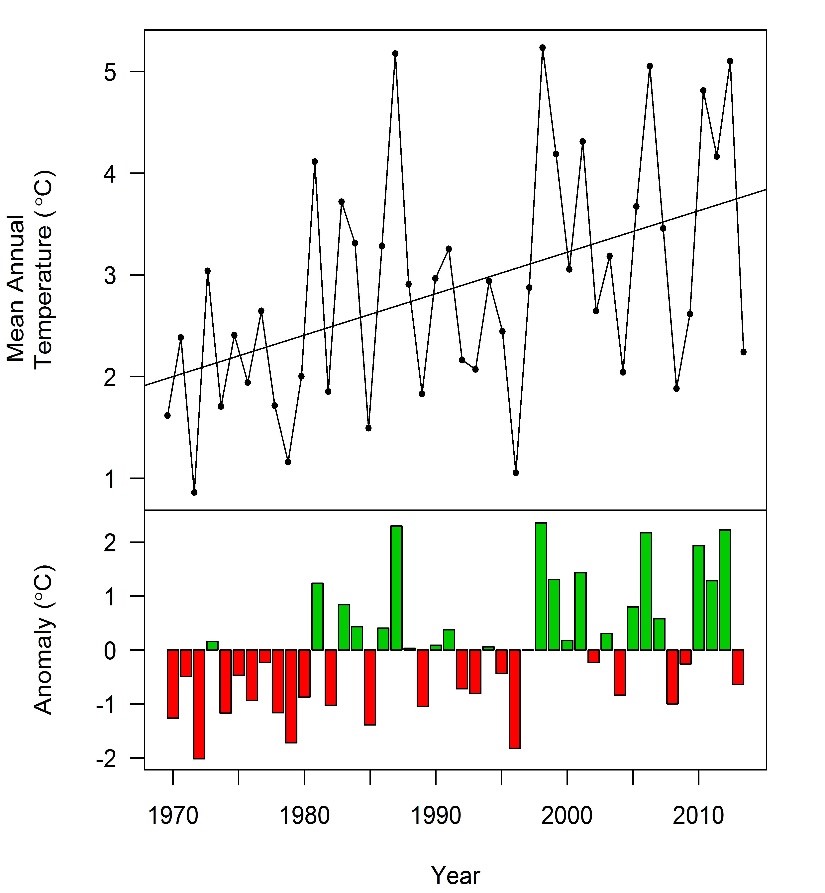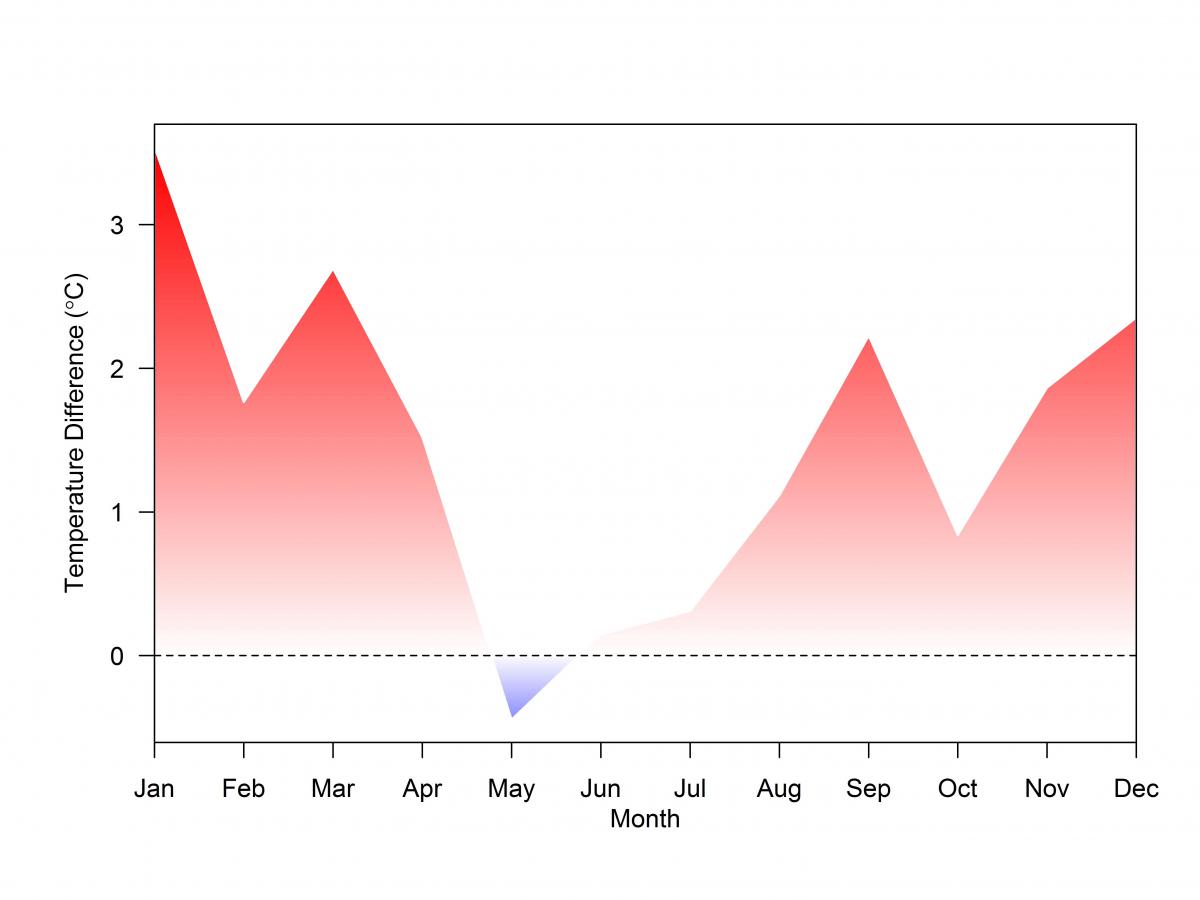Research findings from the IISD Experimental Lakes Area (IISD-ELA) reveal that climate change is not just a future concern, but is already having an impact on the temperature of our air and the length of our seasons. In our 47 years of groundbreaking research, what have we discovered when it comes to climate change?

- First, our air is getting warmer, and this is happening even quicker in northern temperate climates (such as in the boreal forest where IISD-ELA is located).
- Research from the site has found that, since 1969, mean annual air temperatures have increased by 0.42°C/decade at the facility in Northwestern Ontario, much faster than the global average (0.15–0.30°C/decade). Since 1998, air temperatures have continuously been among the highest in our 47 year record (see Figure 1 below).

Figure 1. Changes in mean annual air temperature at the ELA since 1969. The lower graph displays deviation in mean annual air temperature from the long-term average.
- Research also reveals that autumn and winter months are warming much faster than summer months.
- Long-term increases were highest in December and January, where temperature increased by 1.3°C/decade and 1.1°C/decade, respectively, since 1969. There have been no detectible changes in summer (May through August) air temperatures.
- These seasonal trends are obvious when comparing average monthly air temperatures during the decade at the beginning of our dataset (1970–1980) to those during a decade at the end of our dataset (2003-2013) (Figure 2). These data indicate that air temperatures during the winter months were 2–3°C warmer during the most recent decade. Changes in air temperature during summer months were minor and not statistically significant.
- Long-term increases were highest in December and January, where temperature increased by 1.3°C/decade and 1.1°C/decade, respectively, since 1969. There have been no detectible changes in summer (May through August) air temperatures.

Figure 2. Monthly differences in air temperature from a cold decade (1970–1980) to a warm decade (2003–2013)
- There are some long-term changes in precipitation on the horizon. Most climate models predict that, over the next century, Western Canada will become drier and Eastern Canada is set to become wetter, with increased precipitation.
- Such changes are important for our lakes and rivers, affecting water quantity and many of their physical, chemical and biological properties. For example, over the last decade, the Lake Winnipeg basin has seen greatly increased precipitation, which has been linked to increased loading of nitrogen and phosphorus from agricultural lands into rivers feeding Lake Winnipeg. These “extra” nutrients have helped promote large algal blooms in the lake that are associated with poor water quality and beach closures. A similar phenomenon has occurred in the watersheds feeding into western Lake Erie, where climate-enhanced nutrient loading combined with draining of agricultural lands is also responsible for increases in algal blooms.
- At IISD-ELA, the long-term record of total annual rainfall appears to follow a wet-dry-wet cycle within a 31-year period. The late 1960s and early 1970s were a wet period, followed by dry conditions during the mid-1970s through the mid-1980s. Since the mid-1980s the region has received increasing amounts of rainfall. The long-term record revealed no significant changes in snowfall.
IISD-ELA, Climate Change and the Boreal Forest
IISD-ELA is located in the boreal forest, which represents the largest ecozone on the planet, covering 11 per cent of the planet’s total surface. Within Canada, the boreal forest dominates the landscape, covering 53 per cent of the total land surface. The boreal forest and aquatic systems play a large role in the global carbon budget.
However, the boreal ecozone is changing. A history of more intensive land use, industrial development, electricity generation and resource extraction has altered the natural balance in minor and major ways. Most importantly, a changing climate affects water, land and life. Responsible use of our natural resources requires a scientifically rigorous understanding of these systems and how they are changing. Fortunately, Canada’s premier freshwater research station has a front row seat and a history of monitoring parameters that can tell us how the world’s northern forests and freshwater lakes are affected by these changes. IISD-ELA brings a 47-year (1969–present) history of monitoring climate, water quality and fisheries in a unique whole-ecosystem laboratory setting. Now, as a part of the International Institute for Sustainable Development, we have the opportunity to use the long-term monitoring dataset of IISD-ELA to examine how climate change is affecting boreal forests, wetlands and lakes from a consistent, long-term, whole-ecosystem dataset of significant scientific and societal value.
As the world’s eyes are focused on the Paris Climate Change Conference, we wanted to take this opportunity to present some of our major climate change research findings to you, so you can see the data for yourself and understand how climate change is affecting our lakes.
You can stay up to date with all the latest news from IISD-ELA by subscribing to our newsletter, and you can donate to the facility here.